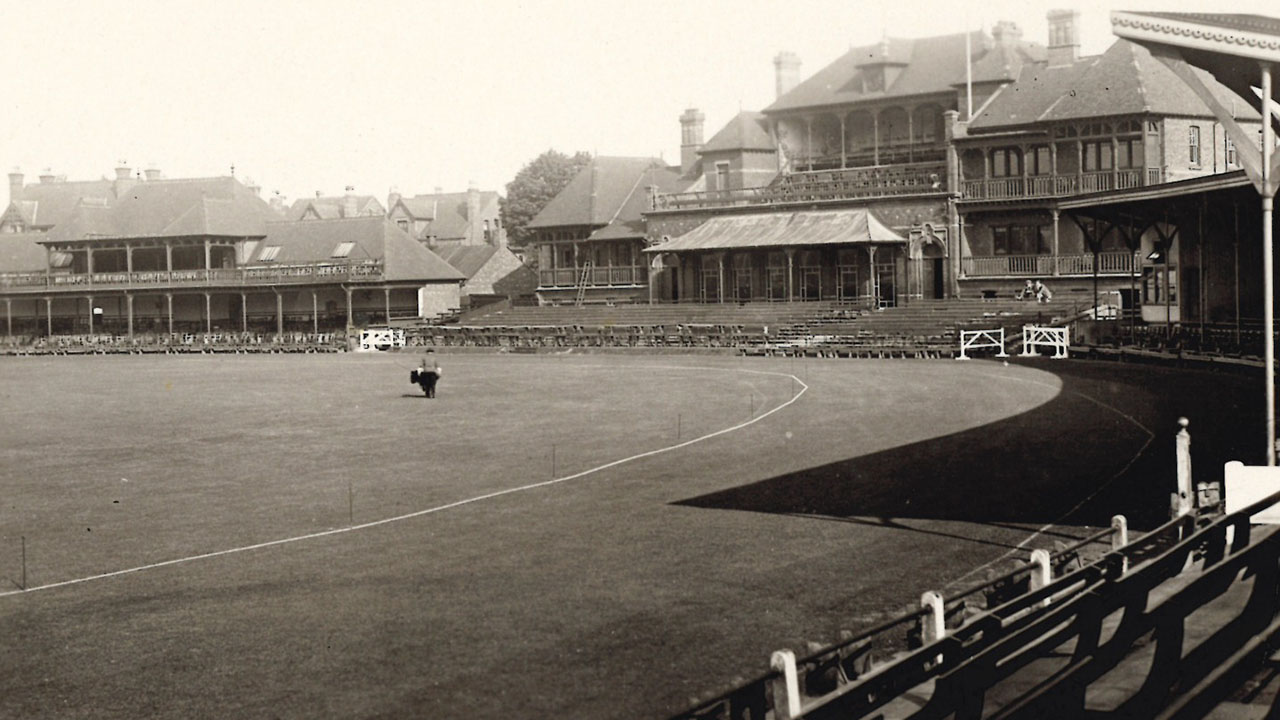At a time when Trent Bridge should be echoing to the sound of leather on willow – not to mention the burble of cricketers’ banter – the ground is very quiet during this current lockdown.
But how does this compare to previous national emergencies?
The 2001 outbreak of Foot & Mouth Disease led to the cancellation of horse racing’s Cheltenham Festival and the British Rally Championship, the postponement of rugby union’s Six Nations tournament and the delay of a General Election – but cricket escaped unscathed.
And although other pandemics such as SARS, Swine Flu, Ebola and Zika had no direct effect on Britain, the two World Wars had a major impact on cricket – and on Trent Bridge.
When World War One began in late July 1914 the County Championship played on, but following pressure from high-profile individuals such as WG Grace and Arthur Conan Doyle the season ended in early September with a few fixtures still to be played.
The two Pavilions at Trent Bridge – the current building and the Ladies’ Pavilion which stood where the Hound Road stand is today – became a convalescent hospital.
Operated by the British Red Cross and staffed largely by volunteers, over 3,500 injured soldiers passed through its wards before the hospital closed in mid-1919.

Although the County Championship was suspended for four years the pitch at Trent Bridge was kept in good condition and hosted a variety of uses during wartime.
These included cricket matches (attended by many wounded soldiers and other spectators, who raised considerable funds for local charities), athletics meetings, cycling events and a sports carnival.
More unusually, an open air concert, a Boy Scouts’ Rally (attended by Lord Baden-Powell) and five baseball games between American soldiers were also staged.
No sooner had the war ended than the nation faced the terrors of ‘Spanish Flu’, which raged around the world during the winter of 1918/19.
‘Social distancing’ was clearly not part of the Government’s action plan at that time: a General Election went ahead at the height of the pandemic, while professional football continued throughout the winter and theatres, cinemas and other large entertainment venues stayed open.
Over 1,300 people died of influenza in Nottingham during the winter of 1918/19. Records do not suggest that any Notts cricketers were among this number, although victims did include Reggie Schwarz, a South African Test bowler who had played at Trent Bridge against Notts in 1904 and 1907; he had served in the war but died from the flu in northern France just a week after the Armistice was signed.
The pandemic appeared to be over by the summer of 1919 so the cancellation of the County Championship season was not considered necessary. However the flu returned with a vengeance during the winter of 1919/20, but it had run its course before the cricket season resumed in May 1920.
The Second World War broke out less than 20 years later, but social attitudes had changed to the extent that county cricket continued in some form throughout the conflict.
At Trent Bridge the Pavilion was requisitioned by the Army as a postal sorting office, but thanks to the efforts of Club Secretary HA Brown Nottinghamshire were the only club to play county cricket throughout the six wartime summers – usually as fundraising events for war-related charities.
The late withdrawal of players, the cancellation of matches at short notice and the early completion of matches were not unusual, but the 54 fixtures – mostly against teams of servicemen or other counties – were appreciated by the cricketers and by the spectators.
Among the 89 different players who represented Notts was a young Reg Simpson who made his debut against a Services XI in July 1940. Meanwhile, home and visiting teams included familiar names such as Sergeant Joe Hardstaff, Bombardier Charlie Harris, Gunner Harold Butler and Sapper Joseph Knowles.
These wartime matches also gave spectators the chance to see some famous Test cricketers guesting for Notts, such as Yorkshire’s Maurice Leyland and Gubby Allen from Middlesex (both of whom had been on ‘The Bodyline Tour’ with Larwood and Voce in 1932/33), Harold Gimblett of Somerset and Ewart Astill from Leicestershire.
Overseas Test players were seen occasionally: New Zealand’s Roger Blunt – a fellow Wisden Cricketer of the Year with Leyland, Gimblett and Astill – played for Notts in three of the war years, while South Africa’s Denijs Morkel (who had lived in Nottingham since the 1930s) appeared in 1940 and 1944.
Despite the lasting impact of the hostilities the 1946 County Championship resumed on schedule in early May.
It is that prospect of a resumption, albeit delayed, that is driving us on during the current crisis.
*******
The image at the top of this story shows (l-r) Harold Butler, Joe Hardstaff jnr and Reg Simpson
